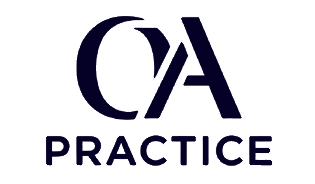D236 Pathophysiology - Set 5 - Part 1
Test your knowledge of technical writing concepts with these practice questions. Each question includes detailed explanations to help you understand the correct answers.
Question 1: A patient with chronic bronchitis shows increased mucus production and airway obstruction. Which cells undergo hyperplasia causing excessive mucus secretion?
Question 2: Which mechanism allows viruses to evade immune detection by constantly changing their surface proteins?
Question 3: A patient develops compartment syndrome after leg injury. What pressure change threatens tissue viability requiring emergency intervention?
Question 4: During kidney failure, which electrolyte accumulation can cause fatal cardiac arrhythmias requiring urgent dialysis?
Question 5: What cellular adaptation occurs in Barrett esophagus when stomach acid repeatedly damages the normal esophageal lining?
Question 6: A newborn fails to pass meconium and has abdominal distension. Which nervous system defect causes Hirschsprung disease?
Question 7: Which coagulation test specifically monitors heparin therapy by measuring intrinsic pathway function?
Question 8: A patient with nephrotic syndrome loses large amounts of protein in urine. What causes the severe edema developing throughout the body?
Question 9: What distinguishes restrictive lung disease from obstructive lung disease in terms of breathing mechanics?
Question 10: During starvation, which metabolic process produces ketone bodies that the brain can use for energy?
Question 11: A patient with acromegaly shows enlarged hands and facial features. What causes continued bone and soft tissue growth in adults?
Question 12: Which immunological mechanism causes transplant rejection when donor and recipient are not properly matched?
Question 13: What protein accumulation in hepatocytes causes the characteristic liver disease in alpha-1 antitrypsin deficiency?
Question 14: A patient develops hemorrhagic stroke. What vessel pathology causes bleeding into brain tissue rather than ischemia?
Question 15: Which cellular junction allows direct cytoplasmic communication between adjacent cells for coordinated responses?
Question 16: During rhabdomyolysis, what muscle cell component damages kidneys when released into circulation?
Question 17: A patient with Marfan syndrome has aortic dilation. Which connective tissue protein defect causes vessel wall weakness?
Question 18: What distinguishes primary from secondary hemostasis in the clotting process?
Question 19: A diabetic patient develops gastroparesis with delayed stomach emptying. What diabetes complication affects gut motility?
Question 20: Which hormone abnormality causes galactorrhea with inappropriate breast milk production in non-pregnant women?
Need Guaranteed Results?
Our exam support service guarantees you'll pass your OA on the first attempt. Pay only after you pass!
Get Exam Support